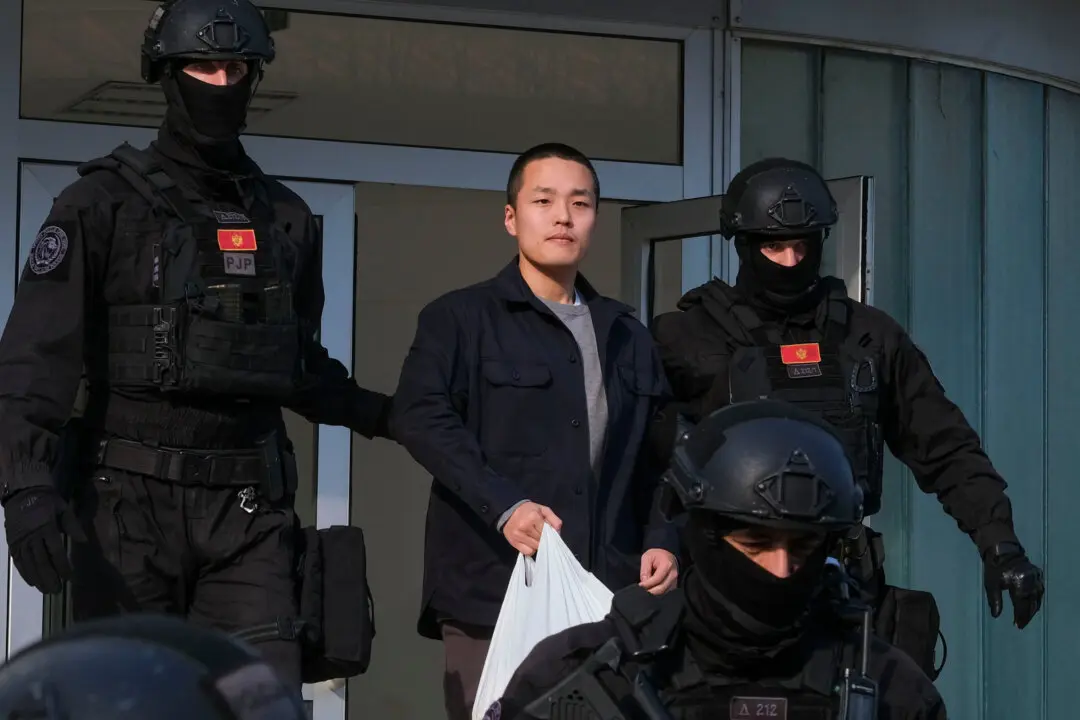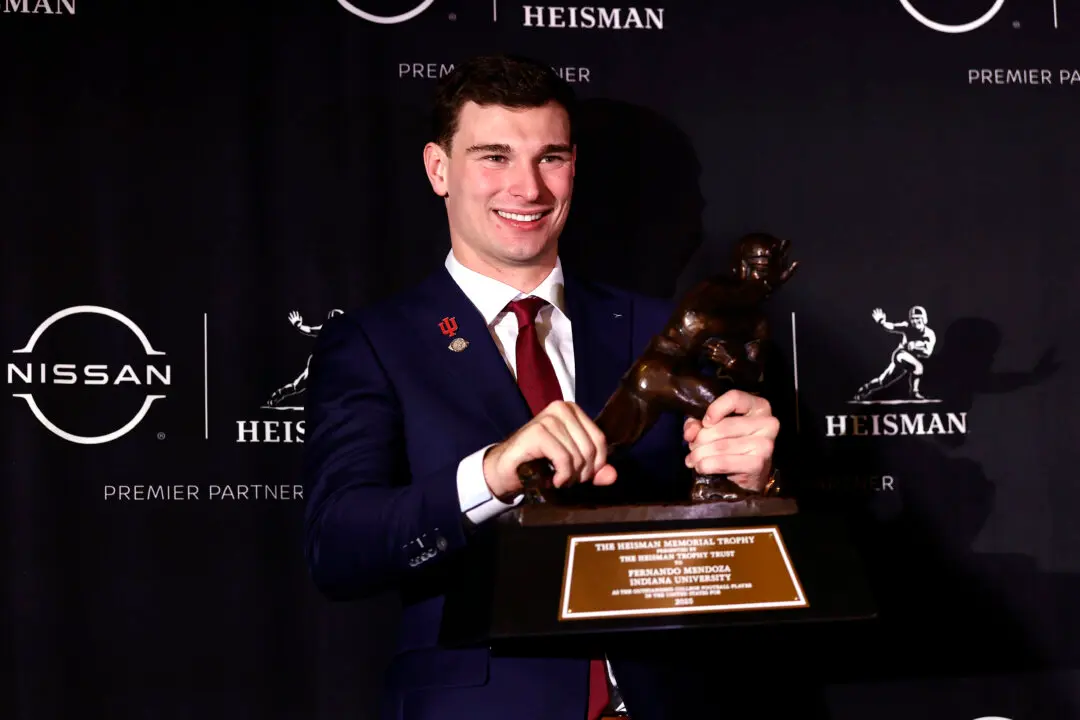SAN BERNARDINO, Calif.—As many as three gunmen believed to be wearing military-style gear opened fire Wednesday at a Southern California social services center “as if they were on a mission,” killing at least 14 people and seriously wounding more than a dozen others, authorities said.
Hours later, police hunting for the attackers riddled a black SUV with gunfire several miles away, and one person lay motionless in the street—dead or dying—with a gun nearby. Officers appeared to remove a second person from the vehicle.
San Bernardino police spokeswoman Sgt. Vicki Cervantes said authorities had not immediately confirmed whether those in the SUV were involved in the morning carnage. As darkness fell, law officers swarmed a neighborhood about a mile from the SUV, apparently in a hunt for a possible third gunman.
It was the nation’s deadliest mass shooting since the Newtown, Connecticut, attack in December 2012 that left 26 children and adults dead.
Police shed no light on a motive for Thursday’s massacre, which came just five days after a gunman opened fire at Planned Parenthood in Colorado, killing three.
In what authorities described as a carefully planned assault, the gunmen invaded the Inland Regional Center, which serves people with developmental disabilities, and began shooting around 11 a.m. They opened fire in a conference area that the San Bernardino County Department of Public Health had rented out for a banquet, said Marybeth Feild, president and CEO of the center.
“They came prepared to do what they did, as if they were on a mission,” San Bernardino Police Chief Jarrod Burguan said, noting the attackers carried long guns—which can mean rifles or shotguns.
FBI agents and other law enforcement authorities converged on the center and searched room to room for the attackers, but they had apparently escaped.
Several people locked themselves in their offices, desperately waiting to be rescued by police, after the gunfire erupted. Some texted their loved ones or telephoned them and whispered to them what was going on.
“People shot. In the office waiting for cops. Pray for us. I am locked in an office,” Terry Petit’s daughter texted him.
Petit, choking back tears as the read the text for reporters at the shooting scene, said his daughter works at the center, where social workers find jobs, housing and transportation and provide other services to people with disabilities such as autism, cerebral palsy and epilepsy.
Ten of the wounded were hospitalized in critical condition, and three were in serious condition, San Bernardino Fire Chief Tom Hannemann said. Police cautioned that the numbers of dead and wounded were early estimates that could change.
No weapons were found at the center, though authorities were investigating unidentified items in the building and brought in bomb squads, Burguan said.
As the manhunt went on, stores, office buildings and at least one school were locked down in the city of 214,000 people about 60 miles east of Los Angeles, and roads were blocked off.
Triage units were set up outside the center, and people were seen being wheeled away on stretchers. Others walked quickly from a building with their hands up. They were searched by police before being reunited with loved ones.
President Barack Obama was briefed on the attack by his homeland security adviser.
He said it was too early to know the shooters’ motives, but urged the country to take steps to reduce the frequency of mass shootings. He told CBS that stricter gun laws, including stronger background checks, would make the country safer.
“The one thing we do know is that we have a pattern now of mass shootings in this country that has no parallel anywhere else in the world, and there’s some steps we could take, not to eliminate every one of these mass shootings, but to improve the odds that they don’t happen as frequently,” Obama said.
The shooting sounded like “an organized plot,” and preliminary information seems to indicate that “this is personal, and there seems to suggest some element of revenge and retaliation,” said Erroll G. Southers, director of Homegrown Violent Extremism Studies at the University of Southern California and a former FBI agent.
“What it says to me, it’s someone who’s familiar with the facility, it’s someone who knew exactly what room they were going to go to, they knew exactly which way they needed to escape,” Southers said. “They’ve done their homework, they know what the response time in this jurisdiction.”
Sherry Esquerra was searching for her daughter and son-in-law, both of whom work at the center. She said her daughter helps “very disabled” children and “gets all the services she possibly could for these kids.”
“I just don’t understand why somebody would come in and start shooting,” Esquerra said. She last saw her daughter at Thanksgiving and planned to see her Friday. When she calls her phone now, “Nothing. I just get her message. Straight to voicemail.”
Marcos Aguilera’s wife was in the building when the gunfire erupted. He said a shooter entered the building next to his wife’s office and opened fire.
“They locked themselves in her office. They seen bodies on the floor,” Aguilera told KABC-TV, adding that his wife was able to get out of the building unharmed.
The social services center has two large buildings that require a badge to get in, said Sheela Stark, an Inland Regional Center board member. However, the conference room where many public events take place—including the banquet on Wednesday—is usually left open when visitors are expected.





